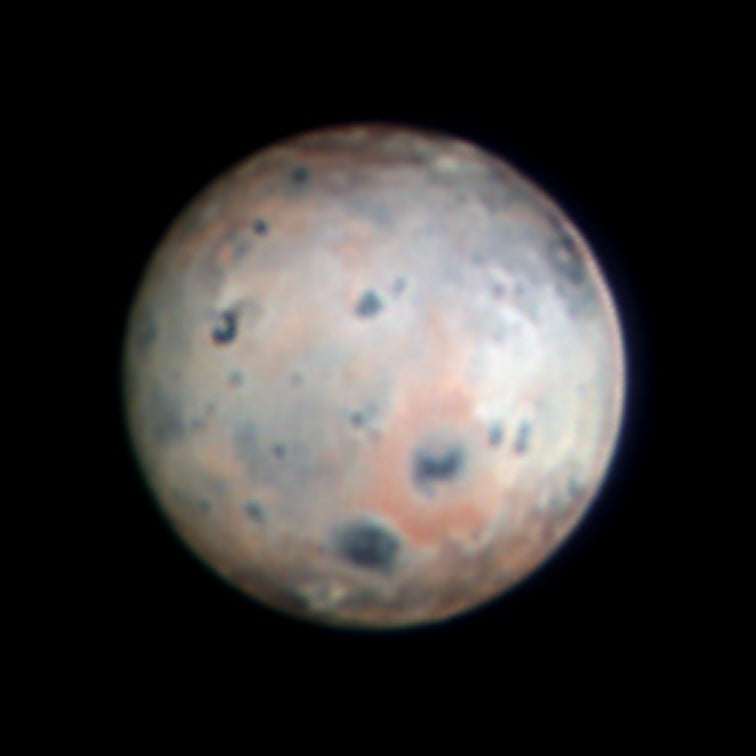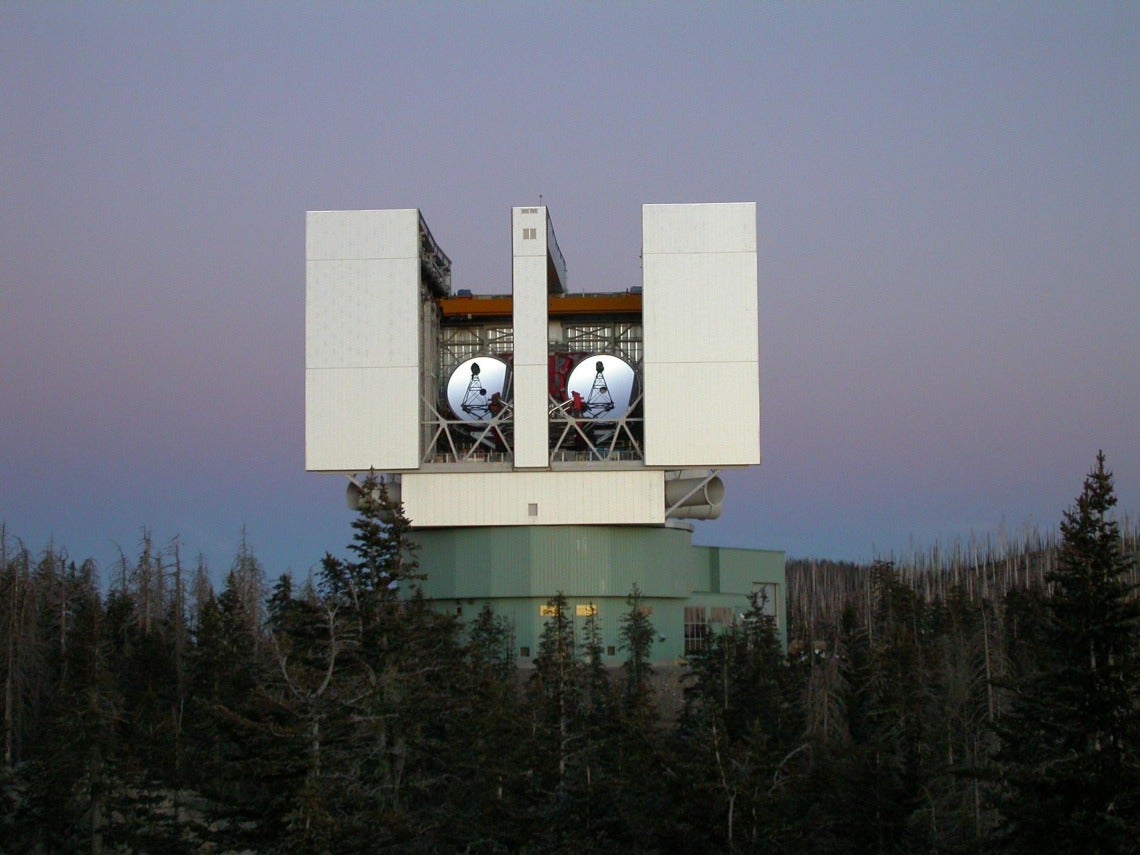
The volcanic world Io has been a hot topic lately. Earlier this year, NASA’s Juno mission swooped close to the moon and snagged close-up views of some of its volcanic activity. However, the newest, high-resolution images of the jovian object have been taken a little closer to home, thanks to a new planetary camera mounted to the Large Binocular Telescope (LBT) on Arizona’s Mount Graham.
In a paper to be published June 4 in Geophysical Research Letters, a U.S.-Italian team led captured the aftermath of a volcano’s plume dumping material onto Io’s surface. The pictures were produced by SHARK-VIS, an instrument that saw first light in 2023. The researchers were able to catch features as small as 50 miles (80 kilometers) across — a resolution previously only achievable from spacecraft. “This is equivalent to taking a picture of a dime-sized object from 100 miles (161 km) away,” a University of Arizona press release noted.
SHARK-VIS is a visible-spectrum instrument built by the Italian National Institute for Astrophysics in Rome. The camera — along with its infrared companion, SHARK-NIR — was designed to capture fast, ultra-low-noise images. It works in tandem with the LBT’s adaptive optics system, which adjusts the shape of its twin secondary mirrors in real time to correct for distortion caused by atmospheric turbulence (or seeing). In processing, algorithms choose the clearest images and combine them for scientists to analyze — a technique called lucky imaging.
“Io was chosen as a test case because it was known to exhibit dramatic surface changes that would be detectable at the spatial resolution of SHARK,” Ashley Davies, principal scientist for planetary geosciences at NASA’s Jet Propulsion Laboratory, tells Astronomy in an email. “As it happens, the first time we observed Io we found a large change had indeed taken place.”
Scientists identified this event in images taken in late 2023 and early 2024. In them, researchers could see an active volcano just south of the moon’s equator named Pele. Its gaseous-rich plume leaves a 620-mile-wide (1,000 km) ring of red sulfur deposits around it. However, when another nearby volcano named Pillan Patera erupted, it resurfaced the area with a combination of dark lava and white sulfur dioxide deposits.

While infrared images can detect the hot glow of fresh magma, visible images like those taken by SHARK-VIS are “essential to identify both locations of eruptions and surface changes not detectable in the infrared, such as new plume deposits,” said Imke de Pater, an astronomer at the University of California, Berkeley, in the press release.
When adaptive optics systems were first developed for ground-based observatories decades ago, they were only practical in infrared light, where it was easier to make the quick corrections to the mirror’s shape necessary to keep up with the effects of turbulent air. But SHARK-VIS is part of a new wave of adaptive optics systems that can work in visible light and nearly eliminate the effects of poor seeing.
Researchers are looking forward to turning SHARK-VIS loose on other solar system objects, including moons, planets and asteroids. “We have already observed some of those, with the data currently being analyzed, and are planning to observe more,” said SHARK-VIS instrument scientist Simone Antoniucci in the release.









